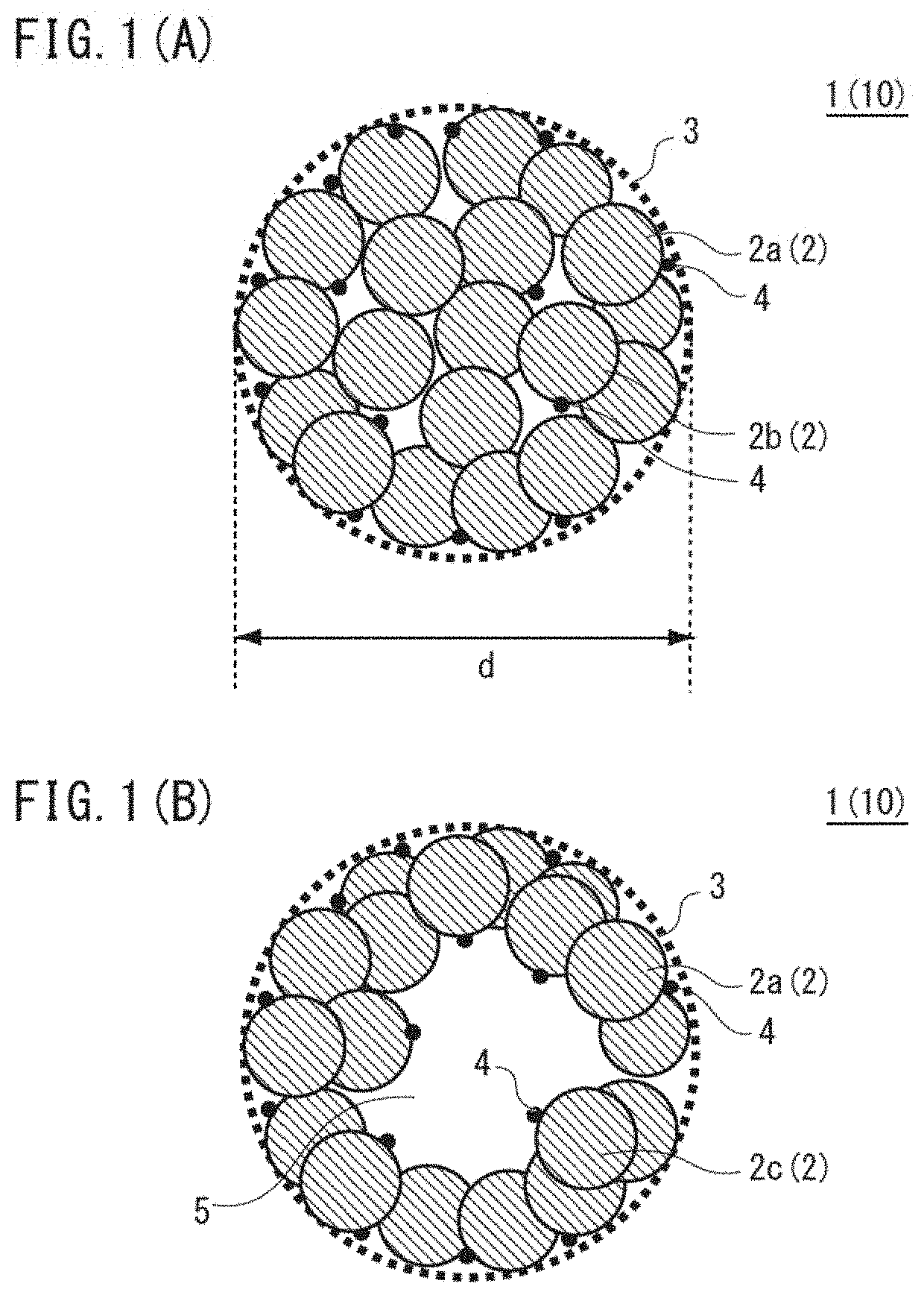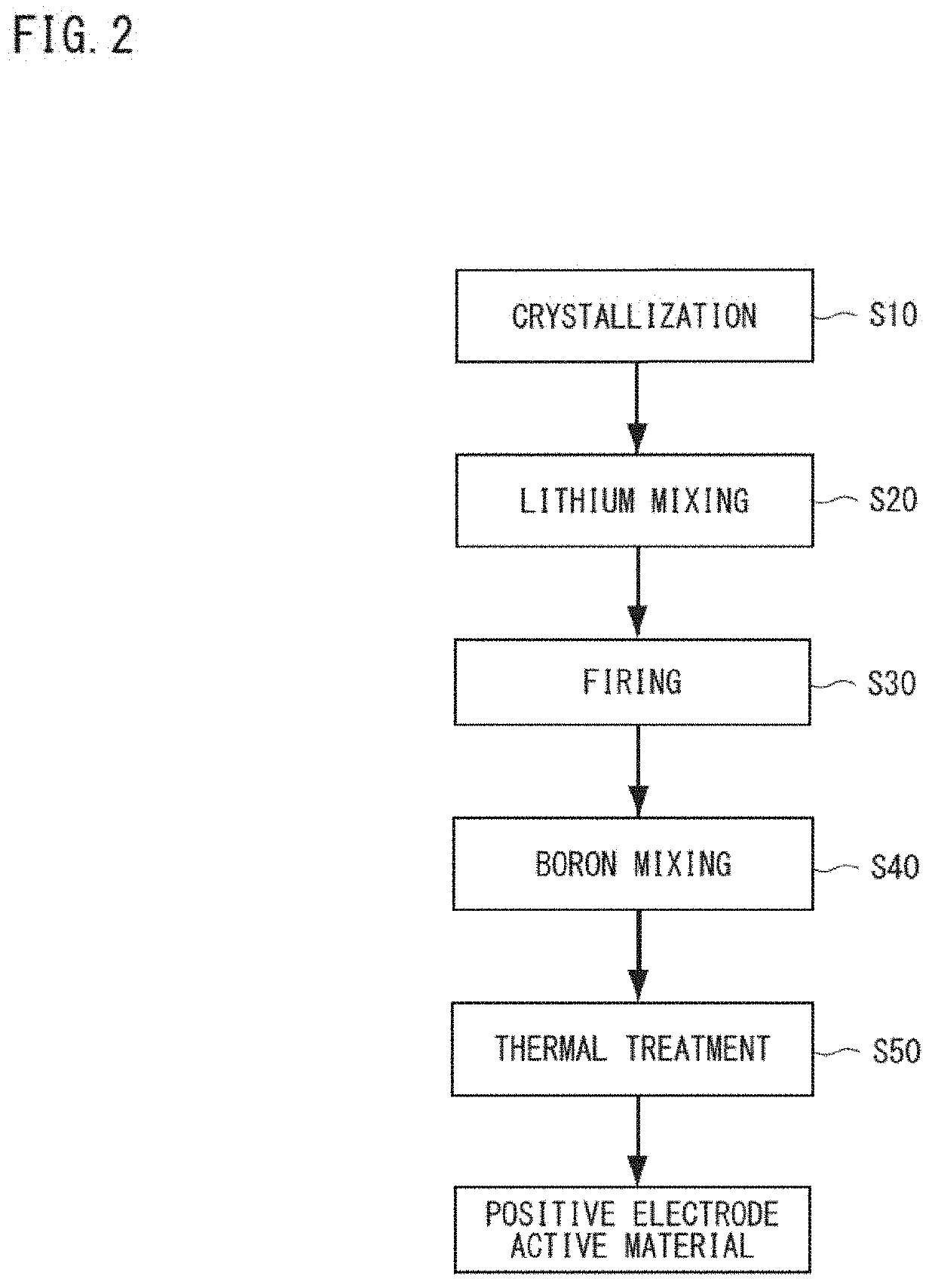Positive electrode active material for nonaqueous electrolyte secondary batteries, method for producing same and nonaqueous electrolyte secondary battery using said positive electrode active material
- Summary
- Abstract
- Description
- Claims
- Application Information
AI Technical Summary
Benefits of technology
Problems solved by technology
Method used
Image
Examples
example 1
[0153](Crystallization Process)
[0154]First, water was put into a reaction tank (60 L) to fill it halfway and was stirred in the atmosphere, and an intra-tank temperature was set to 40° C., to which appropriate amounts of a 25% by mass aqueous sodium hydroxide solution and 25% by mass ammonia water were added. The pH value of the liquid within the tank was adjusted to 12.8 with a liquid temperature of 25° C. as a basis, and the ammonia concentration within the liquid was adjusted to 10 g / L. Added thereto was a 2.0 mol / L mixed aqueous solution of nickel sulfate, cobalt sulfate, and manganese sulfate (with a metal element molar ratio of Ni:Co:Mn=38:32:30) at a rate of 130 ml / minute to obtain a reaction aqueous solution. At the same time, 25% by mass ammonia water and a 25% by mass aqueous sodium hydroxide solution were added thereto at a constant rate to perform crystallization for 2 minutes and 30 seconds while controlling the pH value to 12.8 (nucleation pH). Subsequently, while circ...
example 2
[0162]A positive electrode active material was obtained and evaluated similarly to Example 1 except that the heat treatment temperature during the addition of boric acid was changed to 210° C. Table 1 and Table 2 list evaluation results.
example 3
[0163]A positive electrode active material was obtained and evaluated similarly to Example 1 except that the heat treatment temperature during the addition of boric acid was changed to 290° C. Table 1 and Table 2 list evaluation results.
PUM
 Login to View More
Login to View More Abstract
Description
Claims
Application Information
 Login to View More
Login to View More - R&D
- Intellectual Property
- Life Sciences
- Materials
- Tech Scout
- Unparalleled Data Quality
- Higher Quality Content
- 60% Fewer Hallucinations
Browse by: Latest US Patents, China's latest patents, Technical Efficacy Thesaurus, Application Domain, Technology Topic, Popular Technical Reports.
© 2025 PatSnap. All rights reserved.Legal|Privacy policy|Modern Slavery Act Transparency Statement|Sitemap|About US| Contact US: help@patsnap.com



